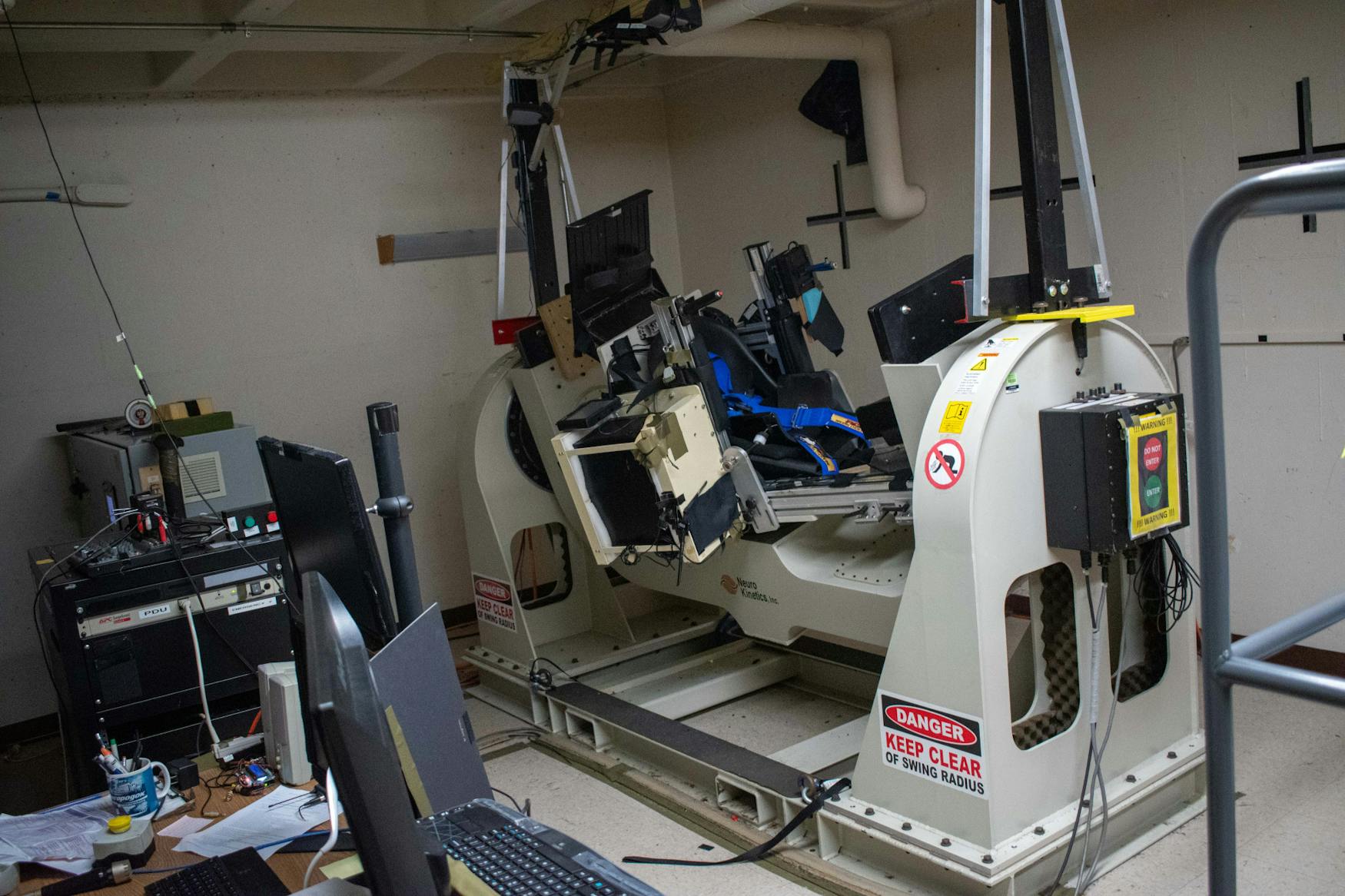Brandeis researcher studies spatial disorientation and sensory augmentation
Vivekanand Pandey Vimal Ph.D. ’17 of the Ashton Graybiel Spatial Orientation Lab uses sensory augmentation to enhance human spatial awareness.
Hidden within the foundation of the Rabbs Graduate Center, the Ashton Graybiel Spatial Orientation Lab remains a secret from many Brandeis students as they ascend the Rabb steps. Inside what looks like a typical hall of a research building, researcher Vivekanand Pandey Vimal Ph.D. ’17 dedicates his time in the lab on unraveling the mysteries of spatial disorientation.
Vimal focuses on spatial disorientation and the impact of incorporating sensory augmentation, like vibration cues, in overcoming disorientation challenges faced by astronauts and pilots. In order to study how astronauts can avoid being disoriented, participants of the study are blindfolded, connected to vibration devices that signal the orientation of the body, strapped in a multi-axis rotation machine — a chair designed to be an inverted pendulum — and told to use a joystick to balance themselves as close to the gravitational vertical as possible. The setup of the experiment allows Vimal to test two conditions: conditions found on Earth and conditions that could be experienced during a spaceflight. He found that during an Earth analog condition, where the participant worked line up to the gravitational vertical, there was a higher success rate. Vimal attributes this to the otolith structure, a part of the ears which helps with the registration of “displacements and linear accelerations of the head.”
However, in a spaceflight condition, subjects have a harder time finding the center of balance. “People get disoriented, they don't know where they are and they can't use gravity to help themselves,” Vimal said in a Jan. 26 interview with The Justice. “That's kind of similar to what astronauts may experience, because astronauts also may not have reliable gravitational information to figure out where they are.” To mimic space conditions, the subject is tilted back 90 degrees, and the center of balance remains in the same location. The change of angle makes it difficult for the otolith structure to function as a human compass.
During the study, Vimal noticed that vibration feedback had positive benefits with performance. However, participants were conflicted by the often inaccurate messages the brain was sending about their body orientation versus the accurate cues that the vibration was sending. He hypothesized that the participants would become attuned with the vibration and that it would correct their perception and become a “second vision.” That was not the case.
“I'm trying to reach towards getting this connection between human and device,” Vimal said, “where you actually perceptually feel like you're in the right location.” Vimal suggests that special training may be needed for individuals to disconnect from their senses and to trust the feedback of the vibrations.
Vimal’s study contributes to greater understanding of how to best serve astronauts and pilots who face the potential danger of spatial disorientation. Focusing on all the flight instruments on a plane simultaneously can be challenging, and a momentary lapse in attention can lead to critical errors.
“If you can communicate through the skin, that information will be processed in parallel,” said Vimal. “That can really quickly inform you and make you focus again” and facilitate rapid reorientation.
Although the focus of the study is for science, as Vimal received funding from the National Aeronautics and Space Administration, it has the potential to enter other aspects of human life like the medical and entertainment field. Vimal’s work looks into the vestibular system, the functions to “detect the position and movement of our head in space.'' In cases where individuals are going through rehabilitation for the vestibular conditions, it may be possible for researchers to develop treatments based on how people process their position in space and respond to sensory augmentation. Similarly, for virtual reality experiences or video games, understanding the vestibular system and effects of sensory augmentation could help developers to create technology that help consumers be more immersed in their virtual surroundings.



Please note All comments are eligible for publication in The Justice.